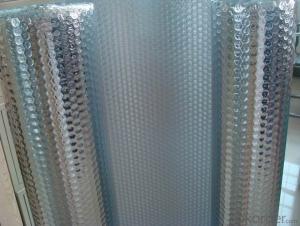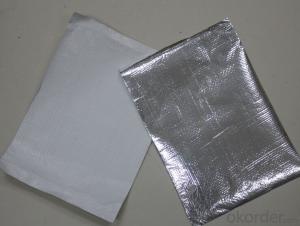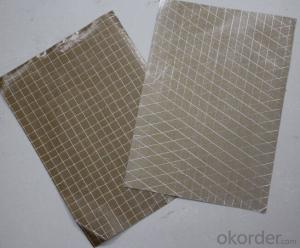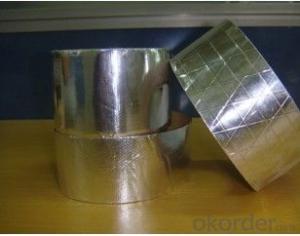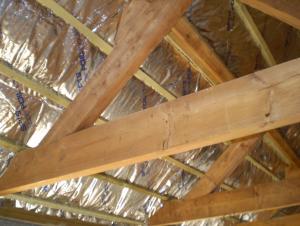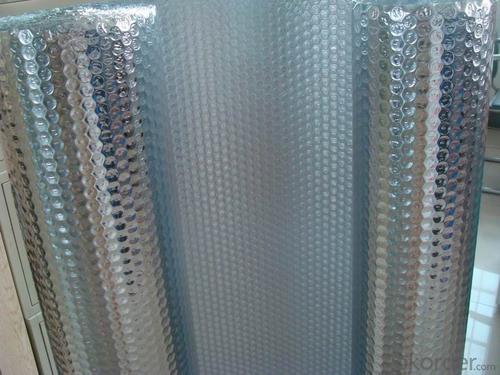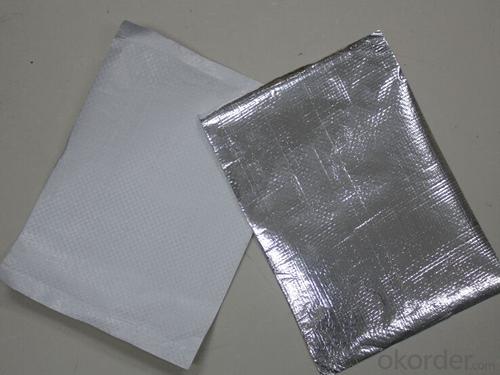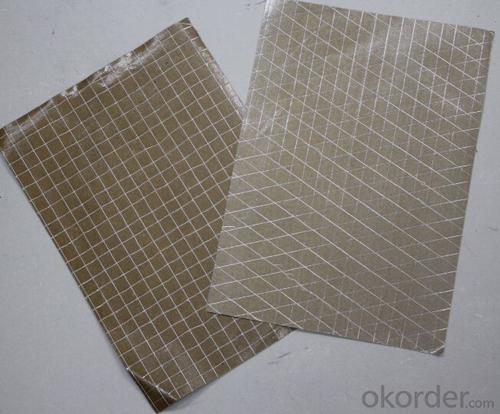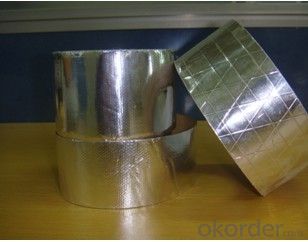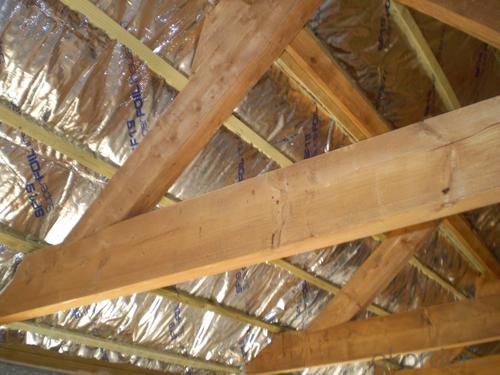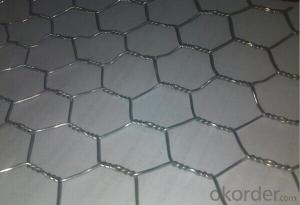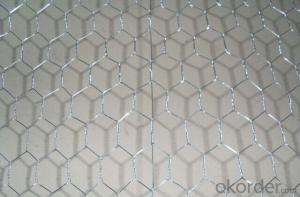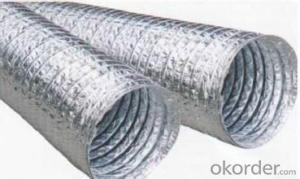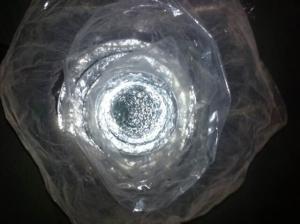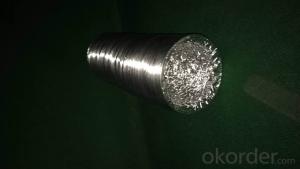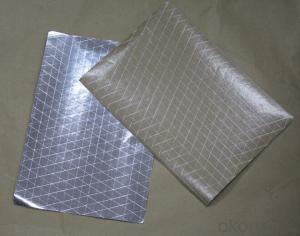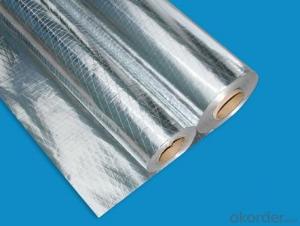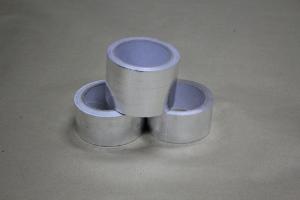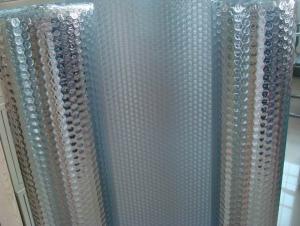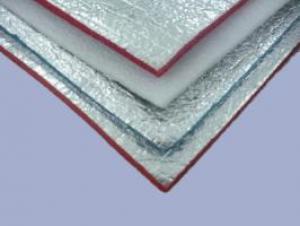Aluminum Foil Facing Flexible Ducts and Bubble Foil Al+Pet+LDPE
- Loading Port:
- Tianjin
- Payment Terms:
- TT OR LC
- Min Order Qty:
- 12 m²
- Supply Capability:
- 30000 m²/month
OKorder Service Pledge
OKorder Financial Service
You Might Also Like
).Raw material for Aluminium: 1235-0, 8011
Raw material for PET: New PET ,OPP is also available
2).Different kinds:
| structure | Normal laminated thickness | Width | Length | Color | ID | OD | Packin |
| AL+PET+LDPE | 7umAlu+15umPet+3umGlue | 6mm-1000mm as your required | 500m-7000m | Silver blue bronze black others | 2"or3" | 250mm-600mm | polybag caron pallet
|
| 9umAlu+12umPet+3umGlue | |||||||
| AL+PET+AL | 6umAlu+15umPet+6umAlu+6umGlue | ||||||
| PET+AL+PET | 15umPet+7umAlu+15umPet | ||||||
| AL+PET+EAA | 7umAL+15umPET+25umEAA+6umglue | ||||||
| AL+PET+AL+EAA | 7umAlu+15umPET+7umAlu+25umEAA+9umglue | ||||||
| PET+PET | 15umPet+15umPet +3umGlue | ||||||
| Polyester Tape | 15um,18um |
3).Certificaton: SGS
4).Specifications:
The following is the single side aluminium mylar tape specifications for you take reference:
Description: Al+PET Tape(AL/myler Tape) | ||||
Composition:aluminium foil and polyester film | ||||
Structure | Thickness(um) | Proportion(g/m2) | Elongation(%) | Strength(N/15mm) |
6um AL/12um PET | 20 | 36 | 30 | 2.7 |
7um AL/15um PET | 25 | 43 | 35 | 2.7 |
7um AL/20um PET | 30 | 50 | 35 | 3 |
9um AL/12um PET | 25 | 45 | 30 | 2.7 |
9um AL/15um PET | 30 | 49 | 35 | 3 |
9um AL/20um PET | 35 | 55 | 35 | 3 |
9um AL/25um PET | 38 | 62 | 35 | 4 |
12um AL/12um PET | 25 | 53 | 20 | 2 |
12um AL/15um PET | 30 | 57 | 20 | 3 |
12um AL/20um PET | 35 | 63 | 30 | 4 |
15um AL/15um PET | 30 | 65 | 20 | 3 |
25um AL/15um PET | 45 | 92 | 20 | 3 |
30um AL/25um PET | 60 | 119 | 20 | 3 |
30um AL/30um PET | 65 | 126 | 20 | 5 |
40um AL/30um PET | 75 | 153 | 20 | 5 |
40um AL/38um PET | 80 | 163 | 20 | 5 |
50um AL/25um PET | 90 | 173 | 20 | 5 |
50um AL/50um PET | 100 | 207 | 35 | 6 |
Above values refer to our current production and must be intended as average values | ||||
The reference is not including all specification. | ||||
- Q: Is it possible to recycle aluminum foil with a facing material attached to it?
- <p>Yes, aluminum foil facing can be recycled. However, it's important to separate the aluminum foil from the facing material before recycling. The facing material, often plastic or paper, can contaminate the aluminum recycling process. Most recycling facilities accept clean aluminum foil, but it's best to check with your local recycling center for specific guidelines. Proper separation and cleaning of aluminum foil can ensure it is effectively recycled and contributes to reducing waste and conserving resources.</p>
- Q: Is it safe and effective to use aluminum foil as a facing material for making soup?
- <p>Using aluminum foil directly to make soup is not recommended. Aluminum foil is not designed for cooking food as it can react with acidic or alkaline ingredients, potentially releasing harmful substances into the food. It is also not heat resistant and can melt or warp when exposed to high temperatures. For safe and effective soup making, use materials specifically designed for cooking, such as stainless steel, enameled cast iron, or non-stick pots. These materials are safe for cooking and can withstand high temperatures without compromising the quality or safety of your soup.</p>
- Q: Is it safe to use aluminum foil with a reflective side for storing food?
- <p>Yes, aluminum foil facing can be used for food storage. It is commonly used to wrap, cover, or store food in the refrigerator or freezer. The reflective side of aluminum foil is safe for food contact as it is made of a food-grade material. However, it's important to ensure the foil is clean and free from any damage or sharp edges that could puncture other food packaging. It's also advisable to avoid using it in direct contact with acidic or alkaline foods, as this can cause the foil to corrode and potentially release aluminum into the food.</p>
- Q: What are the unique considerations or guidelines for storing food using food wrap materials?
- <p>When storing food wrapped in food wrap materials, it's crucial to ensure that the food is properly sealed to maintain freshness and prevent contamination. Always wash your hands and the food items before wrapping. Keep perishable foods refrigerated, ideally below 40掳F (4掳C), and use the food within the recommended time frame to avoid spoilage. Avoid wrapping hot foods directly as it can damage the wrap and potentially contaminate the food. Store wrapped foods in a clean environment and away from direct sunlight or heat sources to prevent the wrap from melting or the food from spoiling.</p>
- Q: Is it safe to use recycled aluminum foil for cooking or baking purposes?
- <p>Recycled aluminum foil facing is not recommended for cooking or baking. While aluminum foil itself is safe for cooking and can be used to cover dishes or line baking sheets, recycled foil may have impurities or contaminants from previous uses. It may also be thinner and less durable, leading to potential tearing or puncturing, which can result in food contamination. For safety and food quality, it's best to use new, high-quality aluminum foil for cooking and baking.</p>
- Q: Is there a risk associated with using aluminum foil with raw meat or fish?
- <p>Yes, it is generally safe to use aluminum foil when handling raw meat or fish, as long as it is food-grade aluminum foil. Aluminum foil is designed to be non-toxic and resistant to corrosion, making it suitable for cooking and food preparation. However, it's important to ensure that the foil does not tear or puncture, as this could allow bacteria to contaminate the food. Additionally, avoid using aluminum foil in direct contact with acidic foods, as this can cause the foil to corrode and potentially release aluminum into the food. Always follow proper food safety guidelines when preparing and cooking with raw meats and fish.</p>
- Q: Is it safe to use aluminum foil with a reflective side for storing leftover food?
- <p>Yes, aluminum foil facing can be used for storing leftovers. Aluminum foil is a versatile food storage material that provides a barrier against air, moisture, and bacteria, helping to keep leftovers fresh. The reflective side of the foil is often used because it is thicker and more resistant to tearing, which can be beneficial for containing liquids and ensuring the food is well-sealed. However, it's important to ensure that the foil does not come into direct contact with acidic or highly salty foods, as this can lead to a reaction that may affect the taste or safety of the food.</p>
- Q: This question asks for a comparison of various materials used for food wrapping, highlighting their unique properties and uses.
- <p>Different types of food wrap materials include plastic wrap, aluminum foil, parchment paper, and beeswax wraps. Plastic wrap is versatile, clingy, and great for sealing in freshness, but it's not microwave-safe and may not be eco-friendly. Aluminum foil is heat-resistant, ideal for cooking and sealing, but it's not reusable and can tear easily. Parchment paper is non-stick, reusable, and safe for baking, but it's not as airtight as plastic. Beeswax wraps are eco-friendly, reusable, and can be used in the oven, but they are more expensive and not as widely available. Each type has its advantages and disadvantages depending on the specific use case, such as food storage, cooking, or sustainability.</p>
- Q: Is it safe to use aluminum foil facing to wrap vegetables or fruits for roasting or grilling?
- <p>Yes, you can use aluminum foil facing to wrap vegetables or fruits before roasting or grilling. Aluminum foil is a common and safe method for cooking food as it retains moisture and heat, allowing for even cooking. However, ensure that the foil does not come into direct contact with the heat source for extended periods to avoid any potential risk of aluminum leaching into the food. It's also important to use heavy-duty aluminum foil for cooking to prevent tearing or puncturing during the cooking process.</p>
- Q: Explain the differences between thin and thick aluminum foil facing in terms of thickness, durability, and usage.
- <p>Thin aluminum foil facing is characterized by its low thickness, which makes it flexible and easy to handle but less durable. It's commonly used for wrapping food, baking, and protecting surfaces. Thick aluminum foil facing, on the other hand, is more robust and tear-resistant, suitable for heavy-duty applications such as construction, insulation, and packaging. The thicker material offers better protection and durability, but it's less pliable and can be more challenging to work with.</p>
Send your message to us
Aluminum Foil Facing Flexible Ducts and Bubble Foil Al+Pet+LDPE
- Loading Port:
- Tianjin
- Payment Terms:
- TT OR LC
- Min Order Qty:
- 12 m²
- Supply Capability:
- 30000 m²/month
OKorder Service Pledge
OKorder Financial Service
Similar products
Hot products
Hot Searches
Related keywords
